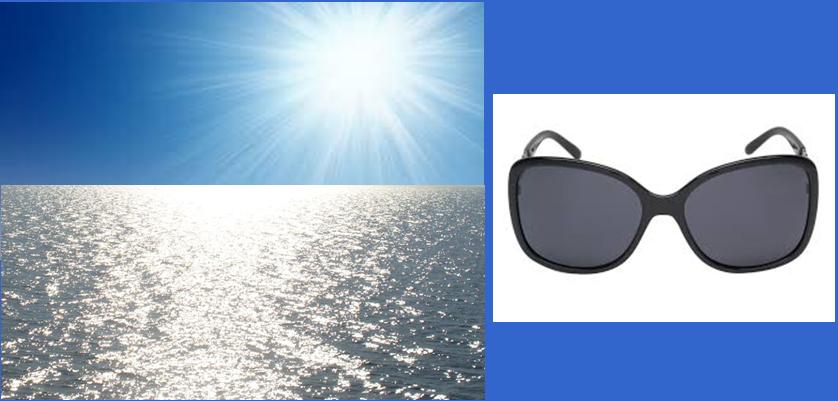Sun and Sun Protection
Sun and Sun Protection
As heliotherapy is defined the sunlight irradiation for medicinal purposes (physical therapy).
infrared radiation: heat effect and the existing particularly in the high mountains and the sea blue to ultraviolet rays have a chemical-biological effect.
Applications: tuberculous skin diseases and bone tuberculosis, psoriasis, atopic eczema, lymphomas, inflammatory dermatoses.
General effect: increased appetite, improved circulation, increased blood formation and an increase in the resistance.
Sun rays: depending on the wavelength and capability to reach a different depth of the skin.
Shorter-wave UV-B radiation (280 to 320 nm) penetrates the top layer of skin, leads to sunburn and is responsible for an increased risk of skin cancer. Through the melanin formation UV-B rays also lead to pigmentation and thus to the tanning of the skin.
The long-wave UV-A radiation (320 nm to 400 nm) even reach deeper layers of the skin, into the connective tissue of the skin, penetrate and cause permanent damage and lead to the premature aging of the skin.
Immune system: by UV irradiation, it is weakened. This has a negative impact on the defenses of the body against infections (such as herpes simplex) and also against cancer cells. UV rays weaken the immune cells in the skin, and both the Langerhans cells and the lymphocytes. Even cell division, and therefore the constant renewal of skin, is inhibited by UV light.
Sunscreen
two types of built-in protection filter
Chemical and physical filters
chemical substances penetrate the upper layer of the skin and make the skin cells more resistant to UV radiation. The penetration into the skin may lead to changes in the structure of the compound, which is in turn blamed that some people develop allergies in the sun. In particular, para-amino benzoic acid may be the triggering factor. It is also hardly to be found for this reason in sunscreens. Today primarily cinnamic acid, camphor and benzophenone derivatives are used.
As a physical filter act micro pigments. It involves ultra-finely ground minerals that are applied to the skin and remain there, ie not penetrate into the skin. The sun’s rays are reflected. Since they do not penetrate the skin cells, they do not trigger allergies: titanium oxide, talc, iron, or zinc oxide. These filters are quite reasonable, but at least they reinforce the protective effect in the UV-B region. But one can not promise too much in the UV-A or broadband filters. In people who are allergic to the UV-A radiation, they have proved to be virtually ineffective.
Sunscreens, what should you take into account?
Skin Compatibility: be dermatologically tested
Absorption spectrum: The complete range of UV-A-B
Photo Stability: The filter substances must not fall apart after only a short exposure to sunlight.
Water resistance: A good product does not lose its effectiveness even after some time in the water.
Sand Strength: Good abrasion resistance is essential for a seaside holiday.
Carriers, so the cosmetic base, is of crucial importance. The basic substances are, for example, hydrogels or fluids which are free of fats, emulsifiers, preservatives, and dyes or preparations with nourishing substances, such as aloe, silymarin, vitamin A or E, coenzyme Q10. After the sun it is recommended to aply aftercare products.
Vitamins for sun protection: These help prevent sun intolerance reactions.
The Q10 levels, but also the vitamin A levels decrease drastically after sun exposure. Cells, which are responsible for the defense in the skin by UV radiation gradually get damaged and so these cells die. The free radicals can no longer be trapped, there is inflammation and at worst damage to the cellular genetic material takes place, because incorrect information will be passed on to daughter cells. As a result, cell mutations, premature aging, cancer precursors (precancerous lesions) can take place and in the worst case, skin cancer can happen.
Longer wave UV-A light can penetrate into the dermis. Radicals formed there, effect crosslinking of the proteins of this skin layer loses its elasticity.
rules prevention
Avoid exposure to intense sunlight.
Do not let it come to the redness of the skin.
Avoid the intense midday sun between 11.00 und 15.00 clock.
The best sunscreen is sun-proof clothing.
Not only chic, but also the most effective protection for the head and
For the face take a big sun hat and sunglasses.
To protect the eyes also look for UVA and UVB protection of the lenses!
Use consistently sunscreen, preferably with UVA and UVB protection.
Apply sunscreen 30 minutes before going out in the sun, – preferably stay in the shade.
Get your skin slowly used to the sun in the first few days of the holiday.
Stay longer time in the shade and first try using a higher sun protection factor (SPF).
Cream out several times a day, because by sweating, is water-body contact and lost the protective effect of sunscreen.
Use when bathing water resistant sunscreen.
Cream after drying, but still the best later on again.
Protect the most sun-exposed body parts, ie face, ears, bald head, shoulders, neck, back of the feet, especially through regular creaming




